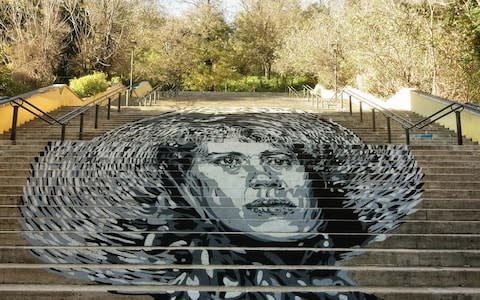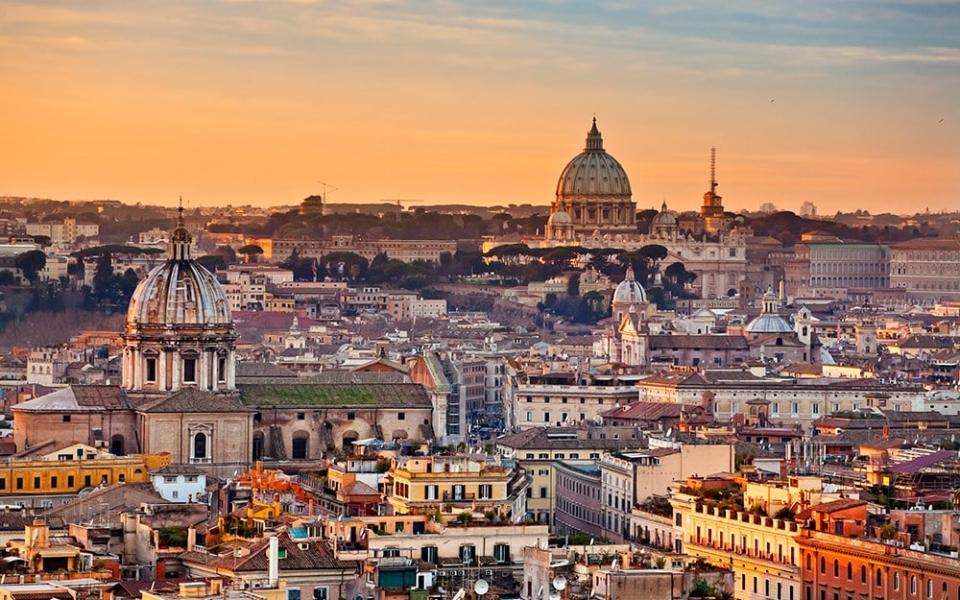The best free things to do in Rome, from the Pantheon to pretty piazzas

More insider guides for planning a trip to Rome
48 hours 48 hours
Hotels Hotels
Attractions Attractions
Restaurants Restaurants
Free Free
Nightlife Nightlife
The Italian capital is filled with historic buildings, and many – such as the Pantheon and various churches – are in fact free to wander around. Inside, expect interesting architecture and centuries-old art. You can also hike up hills for fabulous views of the city, discover quiet cloisters, and spend an afternoon in central Rome's largest gardens – without spending a euro. Follow Telegraph Travel's Rome expert Lee Marshall as shares his favourite free things to do in Rome.
North Centro
Gaze at Rome's best preserved ancient building
It’s difficult to believe that the Pantheon, a temple to all the gods, has been standing here for almost 2,000 years; even the bronze doors are still intact. Hadrian built it on the site of an earlier temple and it was completed in 125 AD. It is the best-preserved ancient building in the city: its salvation was its conversion into a church in 608 AD. The spectacular concrete dome has an open oculus and is a marvel of engineering that has inspired architects ever since. The kings of united Italy are buried here, as is the artist Raphael.
Contact: 00 39 06 6830 0230; pantheonroma.com
Opening times: Mon-Sat, 8.30am-7.30pm; Sun, 9am-6pm (no access during mass 10.30am-11.30am); public holidays, 9am-1pm
Nearest metro: Spagna
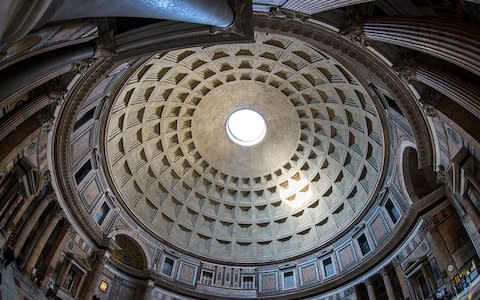

Get access to premium content
Already have an account? Login Subscribe for unlimited access
Become a member of the Telegraph Travel Club and access all the VIP benefits, including Ask the Experts and enhanced exclusive offers.
Want unlimited access to The Telegraph? View subscription options
Subscriber Exclusive Ask the experts
Do you have a travel question on Italy you’d like to put to our experts?
Click here to submit it Terms & Conditions apply
Sneak a peek at the skull of St Agnes
Rome often feels like one magnificent theatre and nowhere is this truer than in Piazza Navona. The piazza takes its long shape from the ancient stadium upon which it was built. Amid the tourist tat are three fountains, the most impressive of which is Bernini's central fountain of Four Rivers, with dramatic representations of the Ganges, Nile (head covered, because its source was unknown), Danube and Plate. St Agnes is said to have been martyred here; her tiny skull resides in the chapel at the back of the Borromini-designed church dedicated to her.
Opening times: Tues-Sun, 9am-1pm, 3pm-7pm

• An expert's guide to getting to Rome
Take a whistle-stop tour of Italian art
There are many reasons to visit Santa Maria del Popolo, a largely 15th-century church: two lovely chapels decorated for the Borgias by Pinturicchio, a mosaic depicting a horoscope designed by Raphael in the Chigi chapel, and some macabre carved skeletons by the main door. To the left of the main altar are Caravaggio's awe-inspiring canvasses, shot through with dazzling light and showing the conversion of St Paul and the martyrdom of St Peter. You can see more of Caravaggio's masterpieces in other churches around the city, most notably San Luigi dei Francesi near Piazza Navona, with three dramatic scenes from the life of St Matthew.
Contact: 00 39 06 361 0836; santamariadelpopolo.it
Opening times: See website
Nearest metro: Flaminio
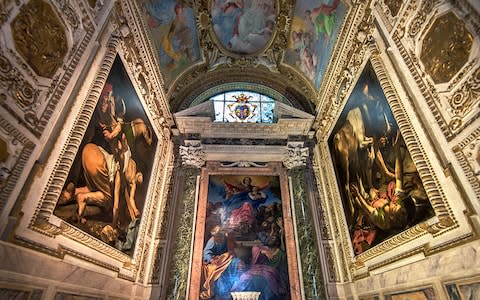
• The best restaurants in Venice
Throw a coin (or three) and make a wish
Niccolò Salvi’s gloriously exuberant Trevi Fountain was completed in 1732. It marks the end of the ancient Aqua Vergine aqueduct that carries water from the spring of the same name in the hills outside Rome. Legend has it that a pure young girl showed the Agrippa the source of the spring, hence the aqueduct’s name. There's always a crowd here, day and night, usually under the wary eye of cops who make sure nobody tries to imitate Anita Ekberg and Marcello Mastroianni's fully-clad wade through the waters in Fellini's La Dolce Vita. Go very early or very late to minimise the throng.
Nearest metro: Spagna
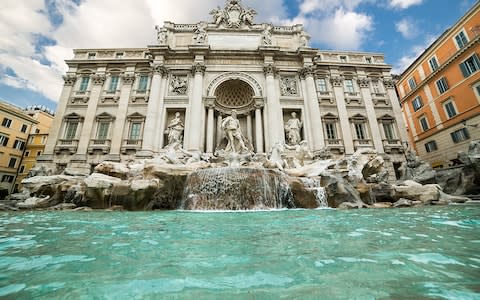
• Our guide to the best nightlife in Florence
South Centro
Marvel at the Vittoriano monument
The bombastic Vittoriano monument, Altare della Patria, is nationalist pomp at its most grandiloquent – an oversized monument to pint-sized monarch Vittorio Emanuele II, the first king of united Italy. A picturesque quarter of medieval houses on Roman foundations was razed to make room for what is known as 'the wedding cake'. Work began in 1885 but proceeded at a snail's pace and didn't end until 1925. An unknown soldier was buried here in 1921, and still has a regularly rotated guard of honour. From halfway up the monument a lift shoots up to the roof, from which there are breathtaking views; but if you want to go to the top, you'll need to pay €7 (£6) for the lift.
Contact: 00 39 06 678 3587; ilvittoriano.com
Opening times: Mon-Sun 9.30am-5.30pm (May-Sept); Mon-Sun 9.30am-4.30pm (Oct-Apr)
Nearest metro: Colosseo

Connect with Rome’s Jewish history
The Jewish Ghetto was officially abolished in 1882, but this storied neighborhood remains the focal point of the city’s Jewish community, the oldest in Europe. Despite its unfortunate history, “il ghetto” is one of the most picturesque quarters of central Rome, its narrow lanes lined with kosher restaurants, markets, and butchers, as well as the ancient ruins of the Portico d’Ottavia and Teatro di Marcello.
Insider’s tip: For a deep dive into Roman Jewish culture, splurge on a ticket to the Jewish Museum of Rome and adjacent synagogue, which includes an audio guide and entrance to the 19th-century Great Synagogue.
Nearest metro: Colosseo
Vatican
Kiss the toes of St Peter
The largest church in Christendom, St Peter’s Basilica, was consecrated in 1626. A choral work by Bramante, Raphael, Michelangelo, Maderno, and Bernini (among others), it replaced a classical basilica said to mark the burial place of Peter the Apostle. Bernini's elliptical colonnaded piazza outside, and his superb bronze baldachin over the main altar inside, are scaled to fool your eye. In the first chapel on the right is Michelangelo's moving Pietà. Closer to the altar, the toes of Arnolfo da Cambio's bronze St Peter are worn shiny by pious kisses. Note that a dress code is observed; no shoulders or knees on display.
Contact: 00 39 06 6988 1662; vatican.va
Opening times: Daily, 7am-7pm (Apr-Sep); 7am-6.30pm (Oct-Mar)
Nearest metro: Ottaviano
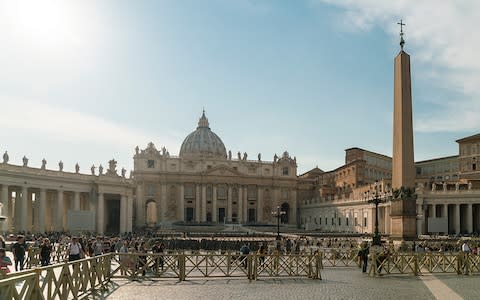
• A weekend in Venice: Our expert's guide
Monti
Explore Rome's former red light district
Back in the days of Empire, Monti was known as Suburra, a densely populated and very rough-around-the-edges district of artisans, chancers and prostitutes. Though gentrified today, its cobbled lanes offer lashings of crumbling Roman charm and make for a refreshing, human-scale contrast with the civic bombast of the Forum and Colosseum. It's a great place to unwind and refuel after a long day's sightseeing, full of funky bars, creative trattorias and alternative fashion and accessory shops (the latter especially in pretty Via del Boschetto).
Nearest metro: Cavour
Aventine
Have a picnic with a view
To be plebeian in Roman times simply meant you were not born into the ruling class. Many plebs were very rich – and the leafy Aventine Hill was their district of choice, a safe and salubrious distance from the rough-and-tumble river port down below. Pretty Parco Savelli, with its great views over the city, is a perfect venue for a sunset picnic with a good bottle of wine. Nearby, peek through the famous keyhole of the Knights of Malta in Piazza Cavalieri di Malta for a magical view.
Nearest metro: Circo Massimo
• The best budget hotels in Rome
Trastevere
Wander pretty cobbled streets
You have to hand it to the Trastevere (pronounced ‘trast-everay’) district. Despite the contradiction of both containing some of the city's priciest real estate and being overrun by tourists during the day and rowdy, hard-drinking Anglo-American college students at night, it still manages to exude a very special rough-edged charm. Being unthinkably picturesque helps, of course; as does having umpteen tempting cafés and bars. To do Trastevere justice, though, it's worth popping into a handful of wonderful churches: Santa Maria in Trastevere, Santa Cecilia and San Francesco a Ripa are the most interesting.
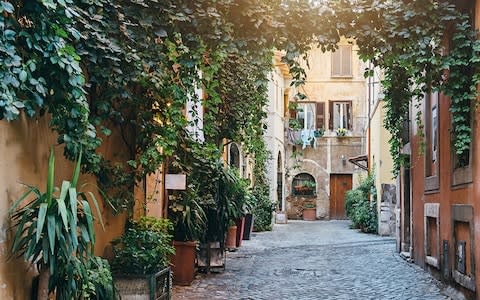
Gianicolo
Scale a steep hill to be rewarded with standout views
The Gianicolo (Janiculum) is not one of Rome's famous seven hills, but it still dominates them all. With the height comes a view – a breathtaking panorama of all of Rome, fantastic in the day and even better at sunset. If you’re there at midday you’ll hear a cannon being fired at the stroke of 12. A good viewpoint is the terrace by the grandiose Fontana Paola just above the church of San Pietro in Montorio. A courtyard next to this church is home to Renaissance architect Donato Bramante's tiny 1502 church, the Tempietto (open Tues-Sun, 10am-6pm) – a miniature masterpiece accessible without charge through the Spanish Royal Academy.

• The best experience in Venice
Quirinale
Admire the dizzying architecture of this tiny church
What an architectural marvel the tiny church of San Carlo alle Quattro Fontane is. Enter this ingenious little place, created by Baroque maverick Francesco Borromini, and you'd hardly guess that the whole footprint was the size of one of the pilasters of St Peter's (this is why locals refer to it affectionately as San Carlino - 'Little Saint Charles'). The tortured architect twisted lines and space to such an extent that volumes seem to appear out of nowhere in this oval creation, lit beautifully by high windows. There’s a crypt below the church, and a tiny courtyard with perfectly proportioned Corinthian columns.
Contact: 00 39 06 488 3261; sancarlino.eu
Opening times: Mon-Fri ,10am-1pm, 3pm-6pm; Sat-Sun, 10am-1pm
Nearest metro: Barberini
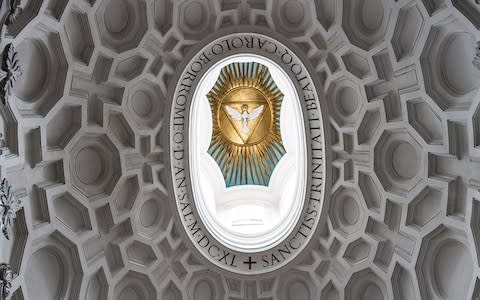
• An expert's guide to a weekend in Rome
Discover a fascinating sculptural scene
The main draw of Gian Lorenzo Bernini's Santa Maria della Vittoria is a side-chapel portraying The Ecstasy of St Teresa. The whole sculptural scene, executed in the mid-17th century, is pure theatre. In high-relief boxes to each side of the chapel, members of the Cornaro family, who commissioned the work, chat idly, barely watching the action. Meanwhile above the altar, the saint swoons in all too carnal ecstasy, her drapery piled elegantly about her, bathed in (divine) light from a hidden window as a mischievous angel prepares to prick her with his arrow.
Contact: 00 39 06 4274 0571; chiesasantamariavittoriaroma.it
Opening times: Daily, 8.30am-12pm, 3.30pm-6pm
Nearest metro: Repubblica or Barberini
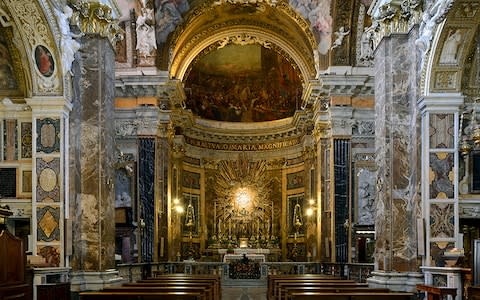
Veneto
Climb one of the world's most recognisable staircases
The celebrated Spanish Steps are named for their proximity to the Spanish Embassy, though building funds were French and the architect was Italian. The official name – Scalinata di Trinità dei Monti (that’s the French church at the top) – must have proved too much for the Grand-Touring Brits who made this area their own in the 18th and 19th centuries. The charming boat fountain at the bottom is by Pietro Bernini, father of the more famous Gianlorenzo. John Keats died at number 26 in a house that’s now an atmospheric museum.
Nearest metro: Spagna
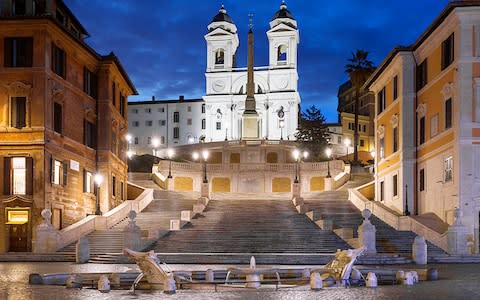
Head far from the madding crowd
In a surprisingly rural part of central Rome you can find the hidden gem that is Santi Quattro Coronati. Normans rampaged through here in 1084. The out-of-proportion apse you see as you meander up Via dei Santi Quattro hails from an earlier building. In the oratory outside the church, 13th-century frescoes tell how Emperor Constantine, miraculously cured of leprosy by Pope Sylvester, endowed the church with political and territorial powers; a fabrication which is a barefaced bit of medieval spin. Cross the church's intricate, Cosmatesque mosaic floor to the early 13th-century cloister – arguably Rome's loveliest.
Contact: 00 39 06 7047 5427; monacheagostinianesantiquattrocoronati.it
Opening times: Mon-Sat 10am-11.45am, 4pm-5.45pm
Nearest metro: Colosseo
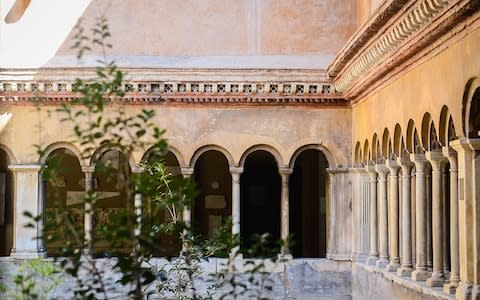
Celio
Follow history underground
San Clemente is one of Rome’s most worthwhile but least publicised sightseeing treats. The historically-layered cake descends from a street-level medieval and early-Renaissance church, with frescoes by Masolino, via a fourth-century early Christian church to the basement remains of a second-century insula (apartment block), complete with a shrine to Mithras. When down here, listen for the sound of running water: an ancient sewer passes close by before dumping its contents in the Tiber.
Contact: 00 39 06 774 0021; basilicasanclemente.com
Opening times: See website
Nearest metro: Colosseo
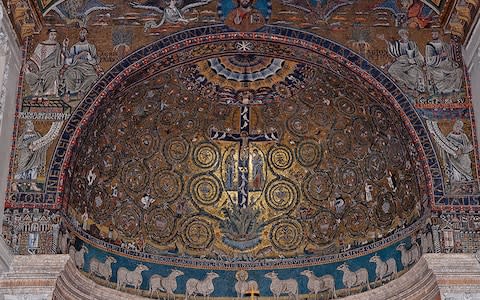
• The best hotels in Rome by district
San Giovanni
Visit the first legal Christian church
The Cathedral of Rome, not St Peter’s, is the city seat of the Bishop of Rome – otherwise known as the Pope. The privilege is conferred by its primacy; it was here that the first official church was built in Rome for the newly legalised Christian cult by the Emperor Constantine. It has been much restored and rebuilt but the 13th-century apse mosaic is charming, and there's a fragment of fresco by Giotto behind the first column on the right. There's also a pretty 13th-century cloister off the left aisle. Facing the basilica across Piazza San Giovanni is the Scala Santa (Holy Stairs).
Contact: 00 39 06 6988 6433; vatican.va
Opening times: Daily, 7am-6.30pm
Nearest metro: San Giovanni
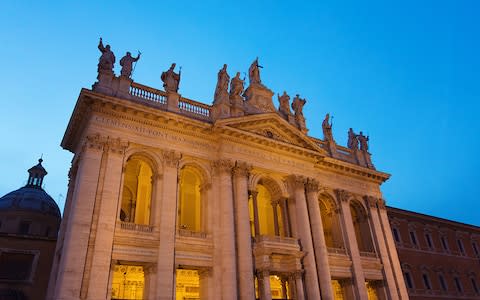
• Venice: The best things to do for free
Esquiline
Peer at 13th-century mosaics
According to legend, snow began falling at the site of Santa Maria Maggiore one August day in 356 AD, so Pope Liberius built a church to the Madonna to commemorate the meteorological miracle. Rebuildings and extensions followed through the centuries, but vestiges of earlier versions linger: the glorious 13th-century mosaics of a former façade in the loggia, fifth-century mosaics above the nave columns, and a marvellously Byzantine 13th-century mosaic of Mary being crowned queen of heaven in the apse. The flamboyant Sistine and Paoline chapels were added in the 16th and 17th centuries, respectively.
Contact: 00 39 06 6988 6800; vatican.va
Opening times: Daily, 7am-6.45pm
Nearest metro: Cavour
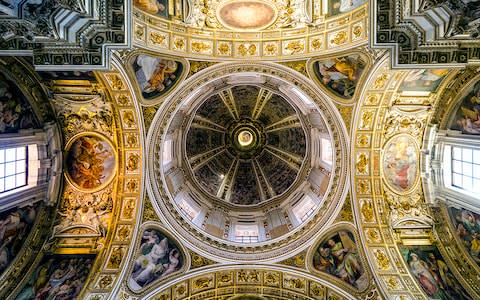
• The best nightlife in Florence
Borghese
Take a walk in the park
Villa Borghese, central Rome's largest gardens, began life as the pleasure park of Cardinal Scipione Borghese, lover of art and the good life. What remains of his art collection is in the Borghese Gallery at the heart of the gardens (booking essential). The cardinal's water-squirting automata and wild animals placed here for hunting forays are a distant memory, but there are bikes and scooters for hire, and dinghies for rowing across the ornamental lake (complete with faux ruined temple). There is also, curiously enough, a copy of London’s Globe Theatre.
Opening times: Daily, dawn to sunset
Nearest metro: Spagna or Flaminio

• The best things to do in Paris
Study Byzantine mosaics
Praxedes, not a well documented saint, is said to have sponged up the blood of second-century martyrs who got the chop before she did, and squeezed it into a well, marked by a porphyry disc in the nave of Santa Prassede. Pope Pascal I built the church here in the ninth century with a side chapel dedicated to his mother, Theodora. He brought craftsmen from Byzantium, hence the exotic exuberance of the spectacular mosaic decoration, especially in his mother's mausoleum, the St Zeno chapel. Off the chapel, a small room contains a column which, we're told, Christ was tied to for flagellation.
Nearest metro: Cavour
Contact: 00 39 06 488 2456
Opening times: Mon-Sat, 7am-12pm, 3pm-6.30pm; Sun, 7.30am-12.30pm, 3pm-6.30pm

• The best shopping in Florence
Testaccio
Pay your respect to the Romantics
That Keats and Shelley should be buried in this lovely place beneath the shadow of Rome's only pyramid is particularly fitting: the pretty Non-Catholic Cemetery is hopelessly romantic and peaceful. Non-Catholics struggled to be allowed a burial in papal Rome, and even after this patch of land was granted to them in the 18th century, funerals tended to take place quietly, often at night. Since 1953 this graveyard has officially been known not as the Protestant but as the Acatholic cemetery; Muslims, Buddhists, Zoroastrians are all buried here, as is Antonio Gramsci, founder of the Italian Communist Party. For most Romans, it's the old name that sticks. Across Via Zabaglia at the south western end of the cemetery is the equally poignant British military cemetery, where a piece of Hadrian's wall has been brought to the ancient metropolis.
Contact: 00 39 06 574 1900; cemeteryrome.it
Opening times: Mon-Sat, 9am-5pm; Sun, 9am-1pm.
Nearest metro: Piramide

Southern Suburbs
Contemplate despotic propaganda
You can’t beat the Mussolini-era Stadio dei Marmi for the full absurdity of over-the-top propaganda art. The Foro Italico sports complex in the northern Flaminio suburb displays Fascist-era sculpture at its most grandiloquent. Around an athletics stadium are 64 massive statues, each donated by different Italian provinces, representing sportsmen transformed into gods and heroes, preening on their marble plinths. Access to the Stadio dei Marmi is free; not so the nearby Stadio Olimpico, where both AS Roma and SS Lazio play home games.
Nearest metro: Lepanto

San Lorenzo & Pigneto
Check out the city’s vibrant street art
Rome’s street art movement has reached critical mass, with a number of local muralists and stencil artists breaking out on the international scene. These politically and socially charged masterpieces decorating the city are, by definition, free and accessible to the public. The highest concentration of works are in the western neighborhoods of San Lorenzo and Pigneto, and there is also some in Ostiense to the south.
Insider’s tip: Street art in Rome is in a constant state of flux, as works are continuously created and destroyed. Though no accurate, up-to-date maps are available, this guide published by the city’s tourist board is a good place to start.
Nearest metro: Pigneto; Roma Termini
